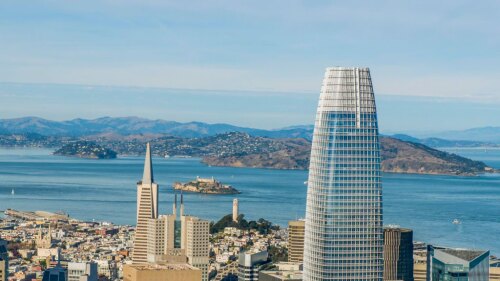San Francisco
ULI’s Homeless to Housed (H2H) initiative, launched after publication of the report Homeless to Housed: The ULI Perspective in 2022, highlights the numerous real estate-driven solutions that have been undertaken in recent years to tackle the problems of affordable housing and homelessness in cities across the country.
Molly Maybrun, chief development officer of local developer Fifth Space, and Wallace Whittier, senior real estate officer for University of California, San Francisco, spoke at the 2025 ULI Fall Meeting about their collaboration to build a new proton therapy cancer center at Fifth Space’s Dogpatch Power Station, a multiphase master-planned mixed-use development on the waterfront at the southern edge of San Francisco’s Mission Bay.
“The primary advantage every modular project has, if you do it right, is time savings,” said Mark Donahue—principal, design, for Lowney Architecture—during the “Offsite Evolved: How Today’s Prefab, Modular, and 3D-Printing Solutions Deliver Proven Speed, Savings, and Scale” panel at the ULI Fall Meeting in San Francisco. “You can, on a, say, 24-month construction project, save six to eight weeks.”
Guy Kawasaki—chief evangelist at Canva, former chief evangelist for Apple, and bestselling author—summed up insights gleaned from his years in tech and as host of the Remarkable People podcast, interviewing such luminaries as Margaret Atwood, Tony Fauci, Jane Goodall, and Steve Wozniak.
The 2025 Lewis Center Sustainability Forum, held during the ULI Fall Meeting in San Francisco, explored ways that local leaders in planning, policy, and development are advancing urban strength and adaptability amid increasing climate and social stresses.
Whether you’re planning for the coming week, year, or even decade, the key question to ask is: What’s next? But in an era both fraught with uncertainty and brimming with opportunity, it is an increasingly complicated question to answer.
Economic forecasters gathered on Thursday, November 6, at the ULI Fall Meeting at the Moscone Convention Center in San Francisco to analyze the current landscape and future expectations for the economy. The ULI Real Estate Economic Forecast, a semiannual survey of leading industry experts, served as the backdrop for discussions about how 33 key economic and real estate indicators are projected to move by the end of 2025, 2026, and 2027.
For decades, civic leaders have tried to revitalize Market Street, San Francisco’s central thoroughfare, only to see their efforts founder. “I sometimes call it the great white whale of San Francisco,” says Eric Tao, managing partner at L37 Development in San Francisco and co-chair of ULI San Francisco. “Every new mayor, every new planning director, every new economic development director has chased that white whale.” This year, however, an international competition of ideas hosted and run by ULI San Francisco, with support from the ULI Foundation, generated fresh momentum for reimagining the boulevard. The competition drew 173 submissions from nine countries and sparked new conversations about the future of downtown San Francisco.
The neighborhood will be home to more than 18,000 people, with a 21st-century focus on sustainability, innovation, and community
U.S. water and sewer rates have surged more than 50 percent in the last decade, with no signs of slowing. In many regions, water supply itself is constrained. Utilities are imposing restrictions, droughts are reshaping long-term availability, and developers are being told there simply isn’t enough water to serve new projects. And even when water is available, municipal wastewater systems often aren’t adequate to handle the extra load.










